The Heinkel He-111 was a German aircraft designed by Siegfried and Walter Günter at Heinkel Flugzeugwerke in 1934. Through development it was described as a "wolf in sheep's clothing". Due to restrictions placed on Germany after the First World War prohibiting bombers, it masqueraded as a civil airliner, although from conception the design was intended to provide the nascent Luftwaffe with a fast medium bomber.Perhaps the best-recognised German bomber due to its distinctive, extensively glazed "greenhouse" nose (which, I might add, it took to long to build), the Heinkel He-111 was the most numerous Luftwaffe bomber during the early stages of World War II. The bomber fared well until the Battle of Britain, when its weak defensive armament was exposed. Nevertheless, it proved capable of sustaining heavy damage and remaining airborne. As the war progressed, the He-111 was used in a variety of roles on every front in the European theatre.This particular build is a He-111 for service in North Africa, carrying two SC1000 “Hermann” bombs. For the controls: AG1: flaps AG2: assigns control of machine guns/turrets to the VTOL & Trim sliders AG3: nav lights AG4: assigns the trim slider to the pitch trim tabs AG5: (un)locks tail wheel steering AG6: drops Hermann 1 AG7: drops Hermann 2 (Watch out for the “dual use” of the trim slider; when using the turret controls, make sure AG4 is deactivated so that the trim tabs remain in their current position.) Have fun !!
Specifications
General Characteristics
- Predecessor Heinkel He 111 - North African theatre
- Created On iOS
- Wingspan 72.6ft (22.1m)
- Length 55.2ft (16.8m)
- Height 18.8ft (5.7m)
- Empty Weight 19,156lbs (8,689kg)
- Loaded Weight 22,745lbs (10,317kg)
Performance
- Power/Weight Ratio 0.592
- Horse Power/Weight Ratio 0.307
- Wing Loading 11.2lbs/ft2 (54.9kg/m2)
- Wing Area 2,023.8ft2 (188.0m2)
- Drag Points 3690
Parts
- Number of Parts 1434
- Control Surfaces 0
- Performance Cost 4,482

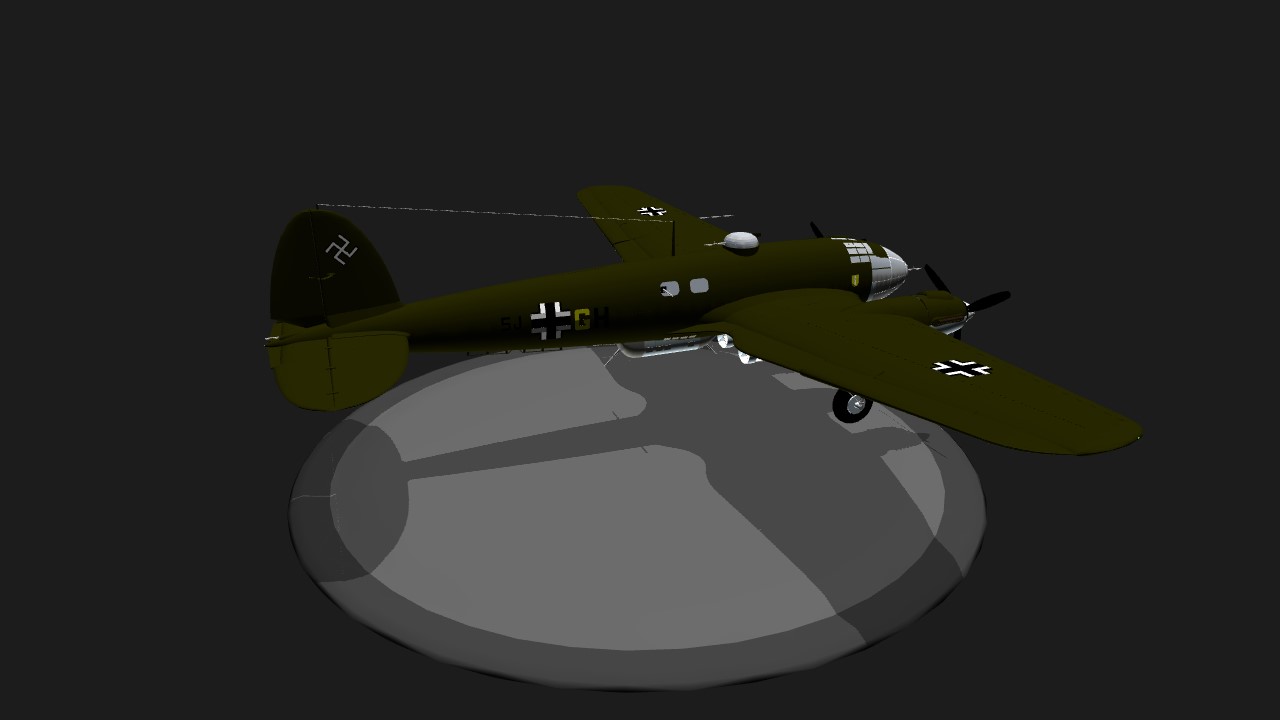
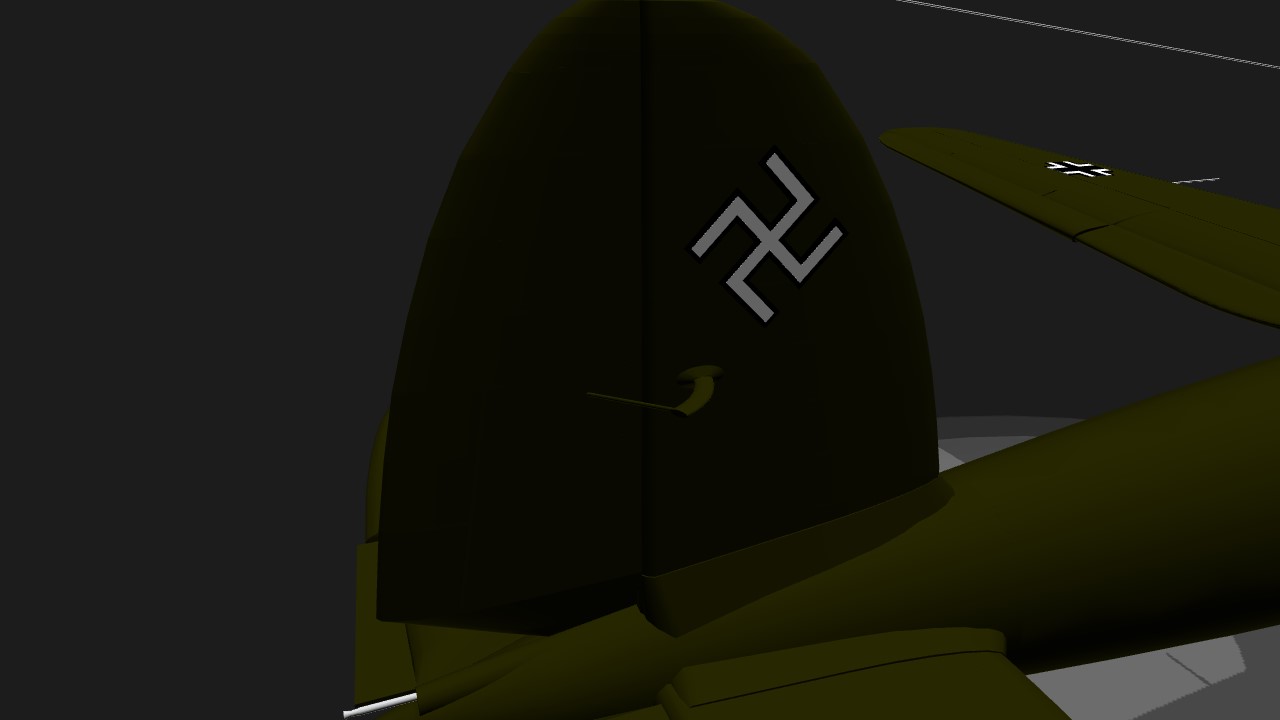
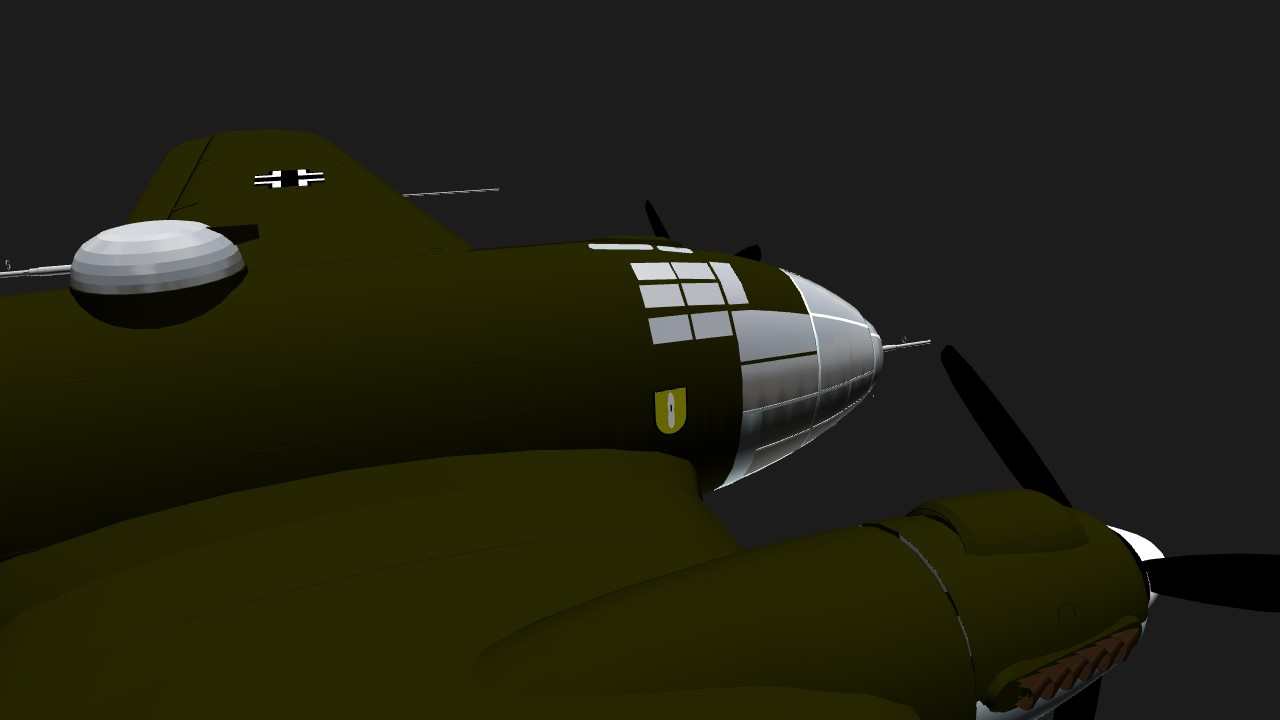
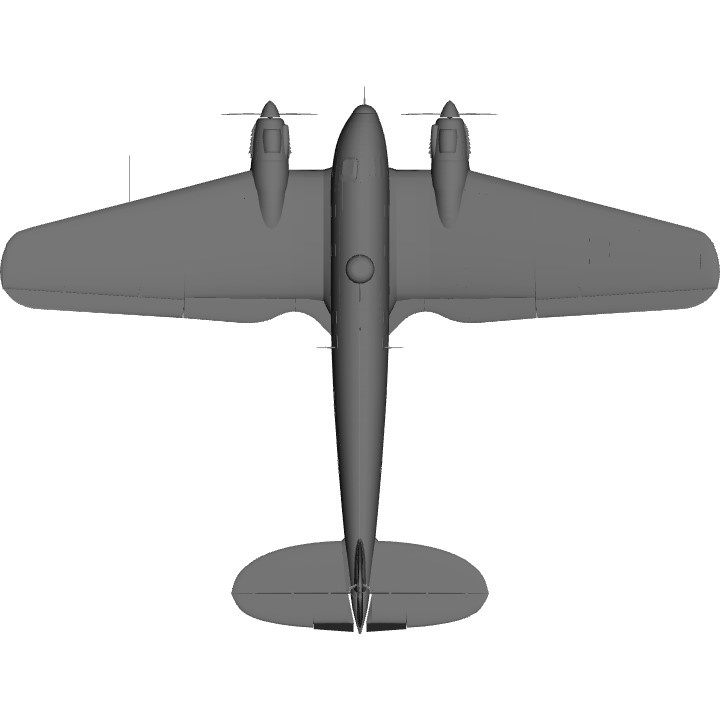
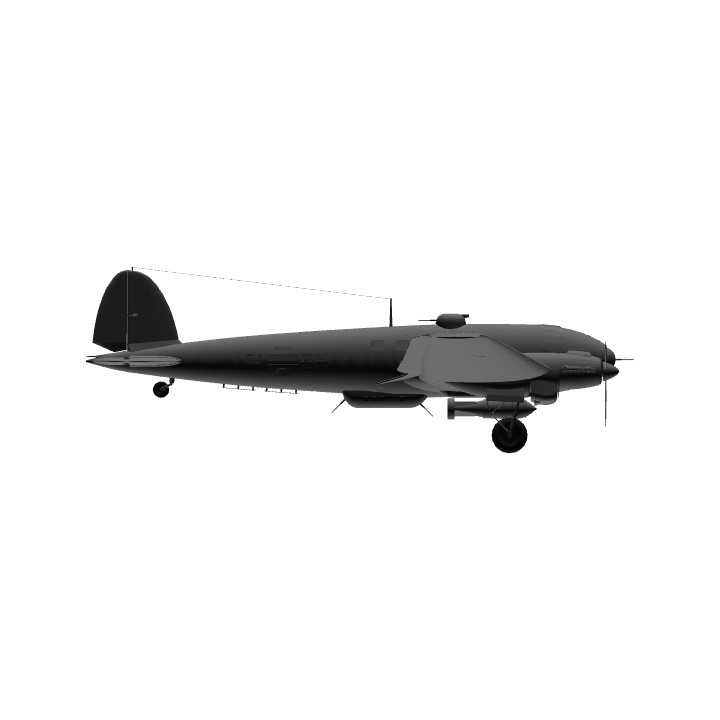
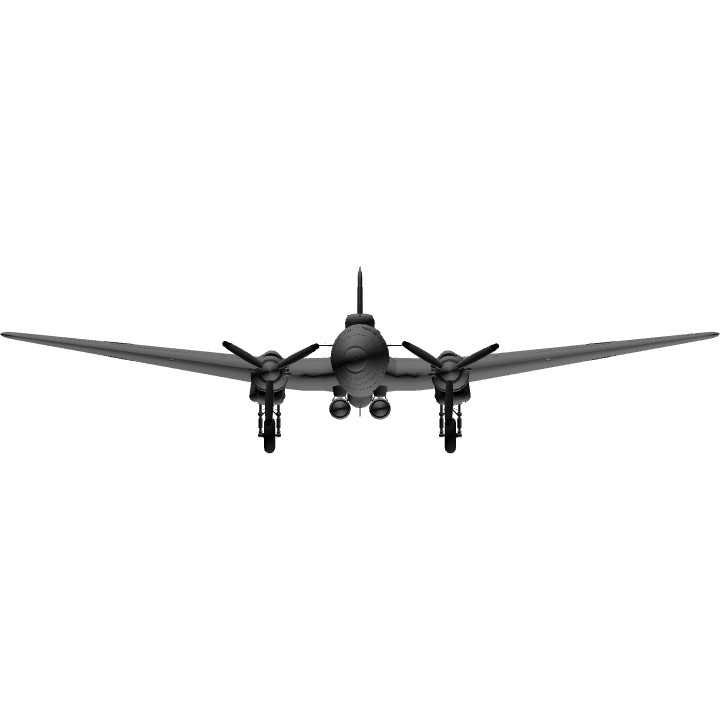
This is the most stolen work I have ever seen.